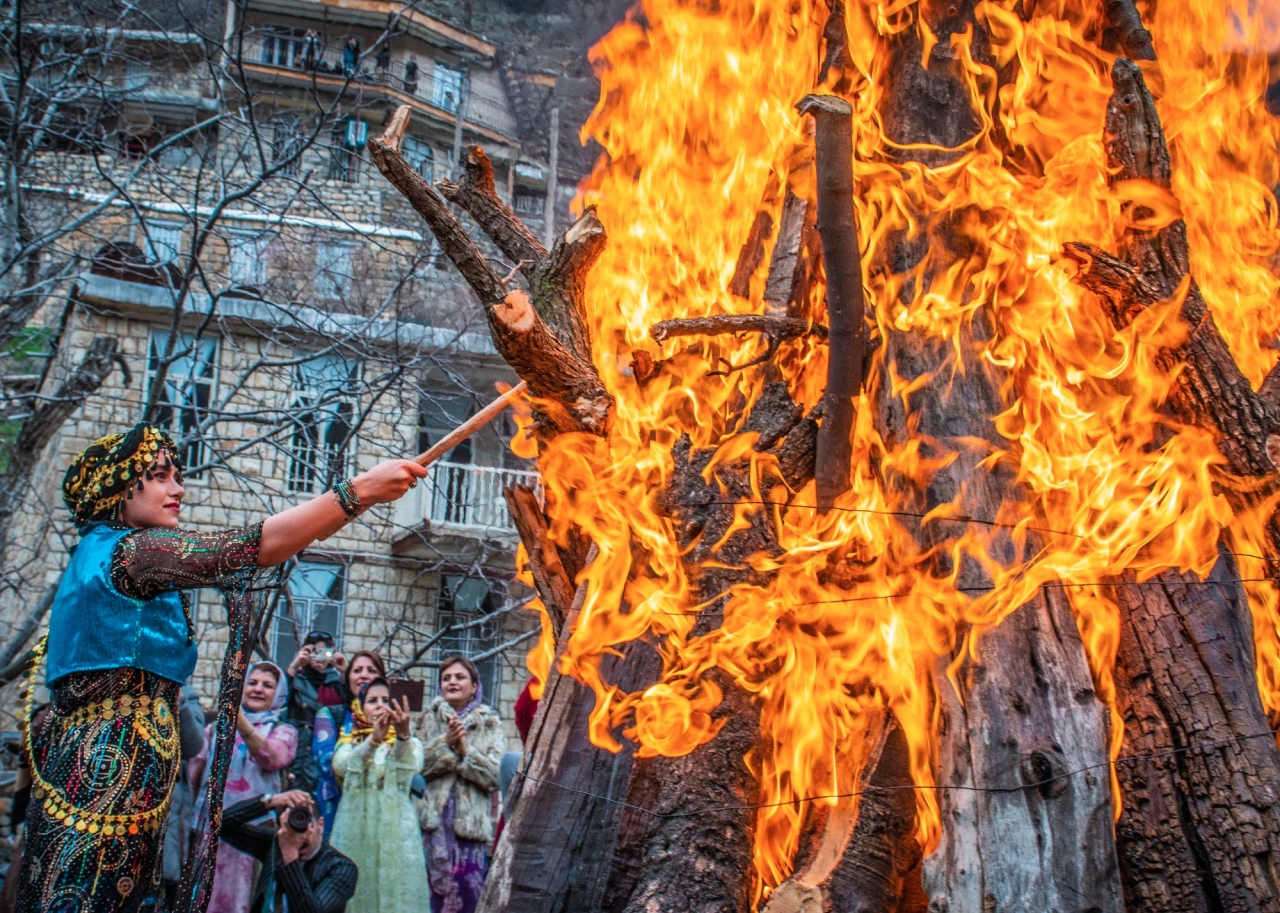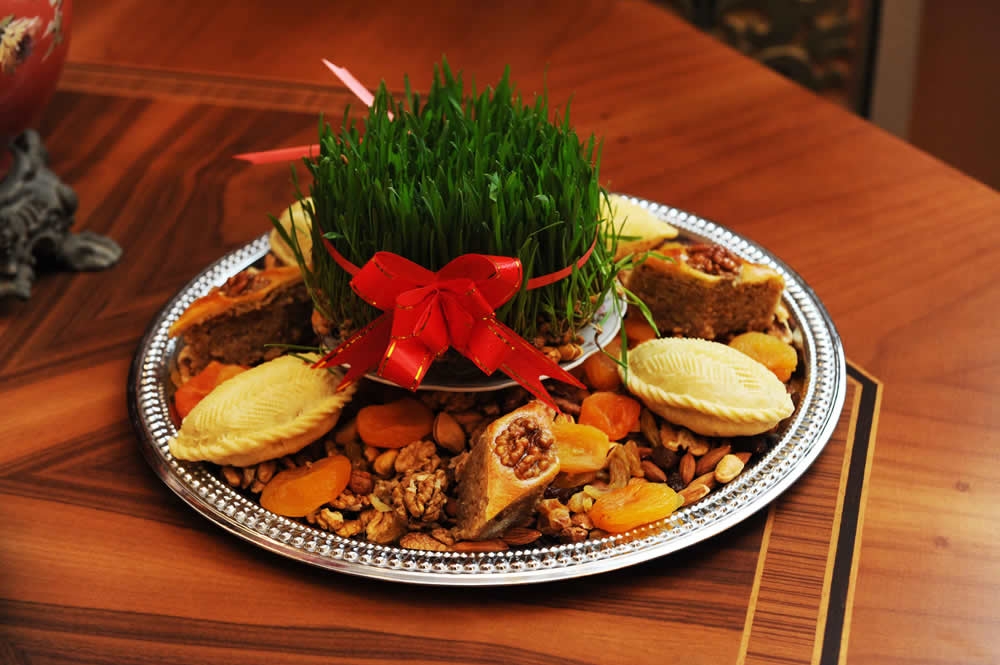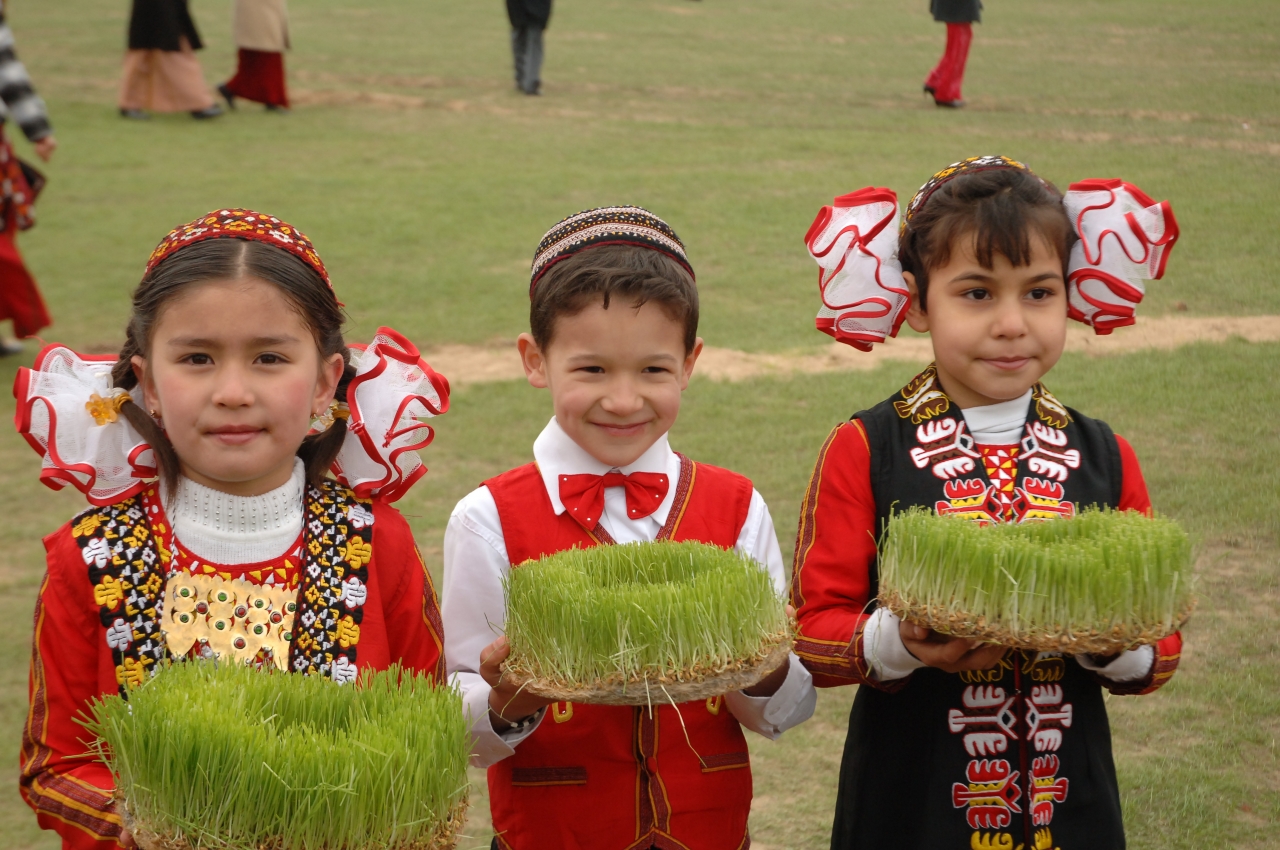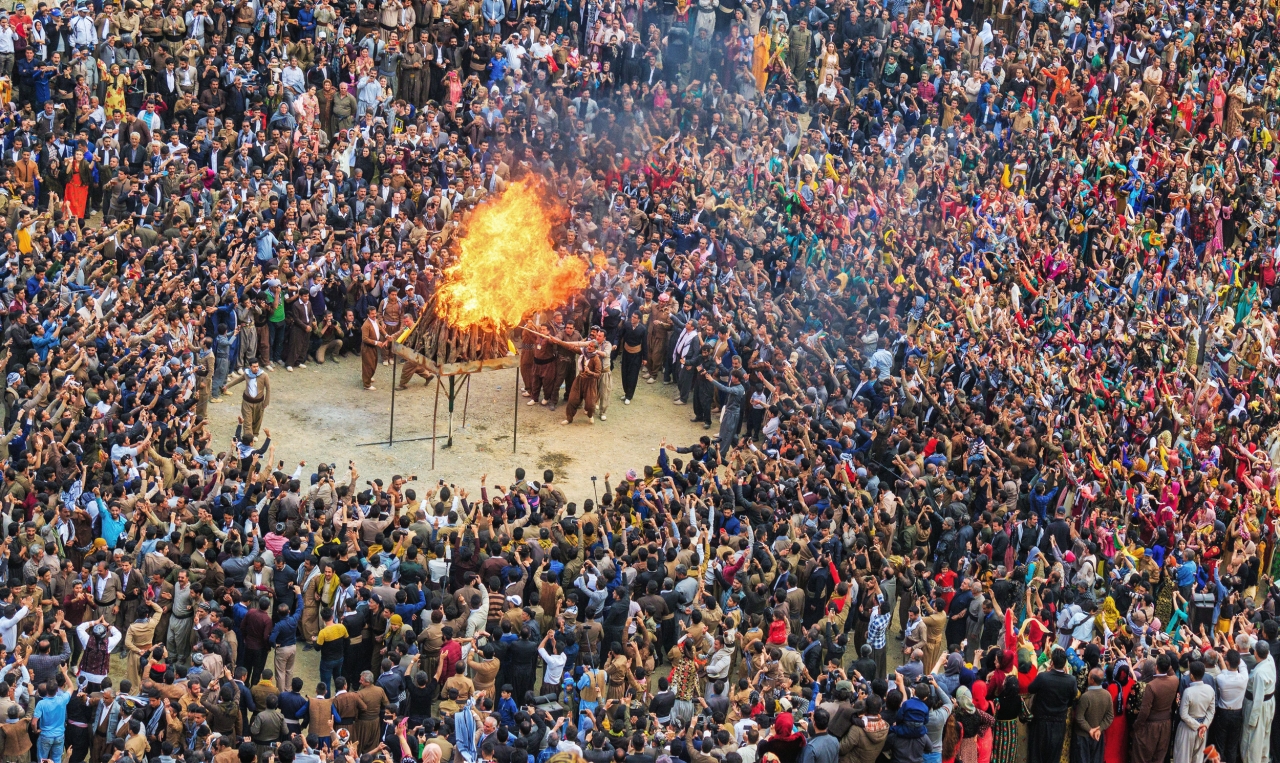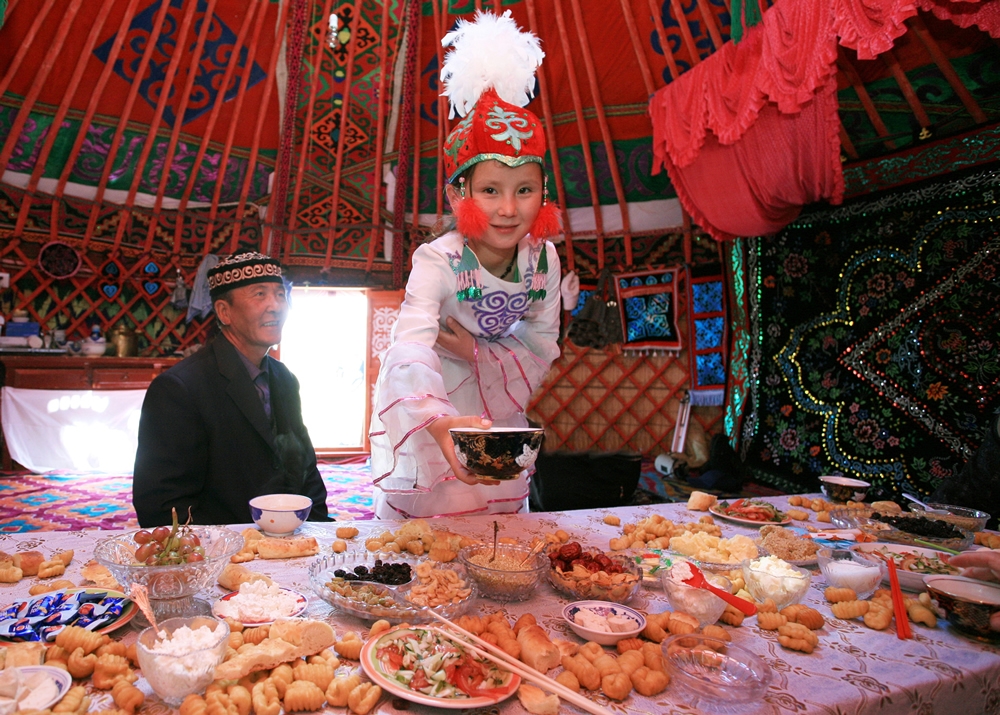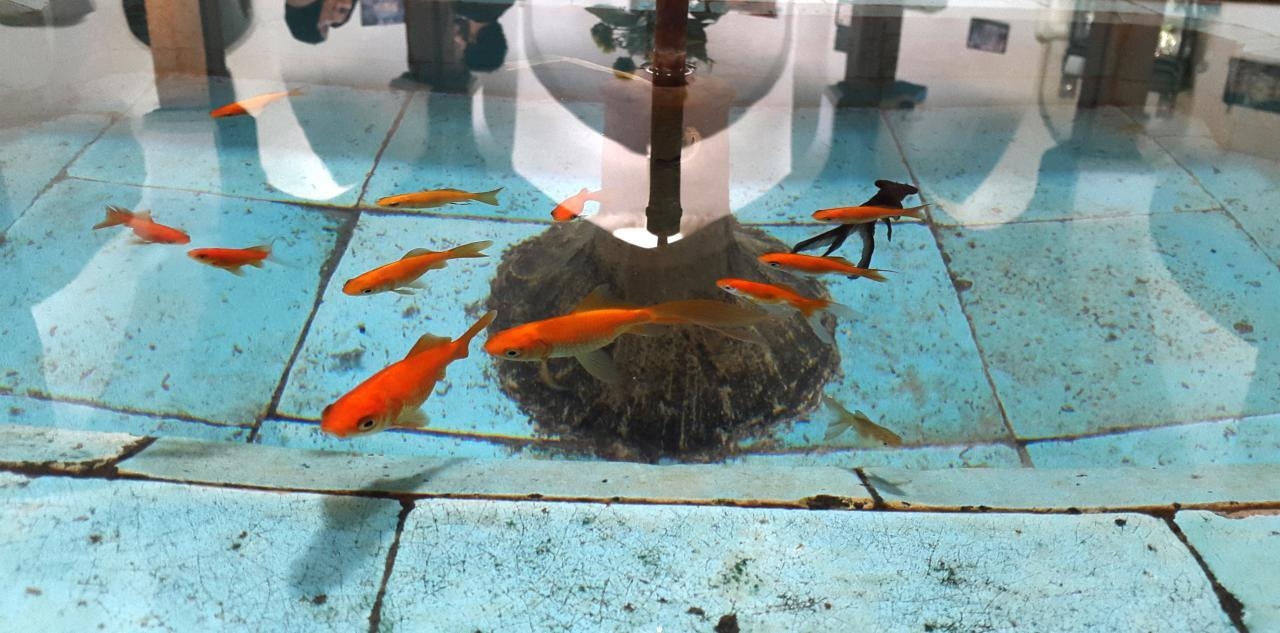Nowruz: The Rebirth of Nature
Iranian Kurdish people are celebrating new year in Satiari Village, Kermanshah©Mardin Ahmadi/UNESCO Youth Eyes on the Silk RoadsNowruz is a rite which dates back to at least the 6th century BCE that marks the new year, ushers in spring, and celebrates the rebirth of nature. Variously known as Novruz, Nowrouz, Nooruz, Navruz, Nauroz or Nevruz, this historic celebration is observed on the 20th or 21st of March in many countries along the Silk Roads, including Afghanistan, Azerbaijan, India, Iran, Iraq, Kazakhstan, Kyrgyzstan, Pakistan, Tajikistan, Turkey, Turkmenistan and Uzbekistan.
The name of this cross-cultural custom means No - ‘new’, and rouz - ‘day’ in Persian. It celebrates new beginnings and the return of spring which is of great spiritual significance as it symbolises the triumph of good over evil, and joy over sorrow. Nowruz includes rituals, ceremonies and cultural events, as well as the enjoyment of a special meal with loved ones.
Marking one of the holiest days of the ancient Zoroastrian calendar, Nowruz is an annual event that honours the shared heritage of the Silk Roads, its traditions, and culture, associated with the birth of spring. Nowruz is celebrated by people from different religious and cultural backgrounds, and its customs have been passed down from generation to generation along the Silk Roads. Over time, Nowruz has developed and expanded, incorporating new social, religious, and cultural influences. Although the traditions and customs of Nowruz vary from country to country, there are many unifying features. For example, in most regions, before the festival people perform ritual dances such as leaping over fire and streams and many households also replenish their water supplies on the last Wednesday of the year.
 Another common ritual and widespread tradition is the preparation of a Nowruz table. The objects on the table symbolise purity, brightness, abundance, happiness, and fertility for the New Year. On Nowruz day, people feast, visit family members and friends, and exchange gifts. Nowruz is also an occasion for traditional cultural activities, combining common practices with local customs, such as poetry, music, open-air festivities or local street performances.
Another common ritual and widespread tradition is the preparation of a Nowruz table. The objects on the table symbolise purity, brightness, abundance, happiness, and fertility for the New Year. On Nowruz day, people feast, visit family members and friends, and exchange gifts. Nowruz is also an occasion for traditional cultural activities, combining common practices with local customs, such as poetry, music, open-air festivities or local street performances.
Nowruz provides an opportunity not only to enjoy the ancient cultural customs of the Silk Roads, but also to promote peace and solidarity across communities by recognizing the significance of our pluralistic identities. As it contributes to cultural diversity and friendship among peoples and different communities, Nowruz fits closely with UNESCO’s mandate.
In particular with relation to the 2003 Convention for the Safeguarding of the Intangible Cultural Heritage, Nowruz was inscribed as an element in 2009, and extended in 2016, on the Representative List of the Intangible Cultural Heritage of Humanity, at the joint initiative of Afghanistan, Azerbaijan, India, Iran (Islamic Republic of), Iraq, Kazakhstan, Kyrgyzstan, Pakistan, Tajikistan, Turkey, Turkmenistan and Uzbekistan. In 2010, the “International Day of Nowruz” was proclaimed by the United Nations General Assembly. This Resolution welcomes the efforts of Member States where Nowruz is celebrated to preserve and develop the culture and traditions related to Nowruz, and encourages Member States to make efforts to raise awareness about Nowruz and to organize annual events in commemoration of this festivity.
